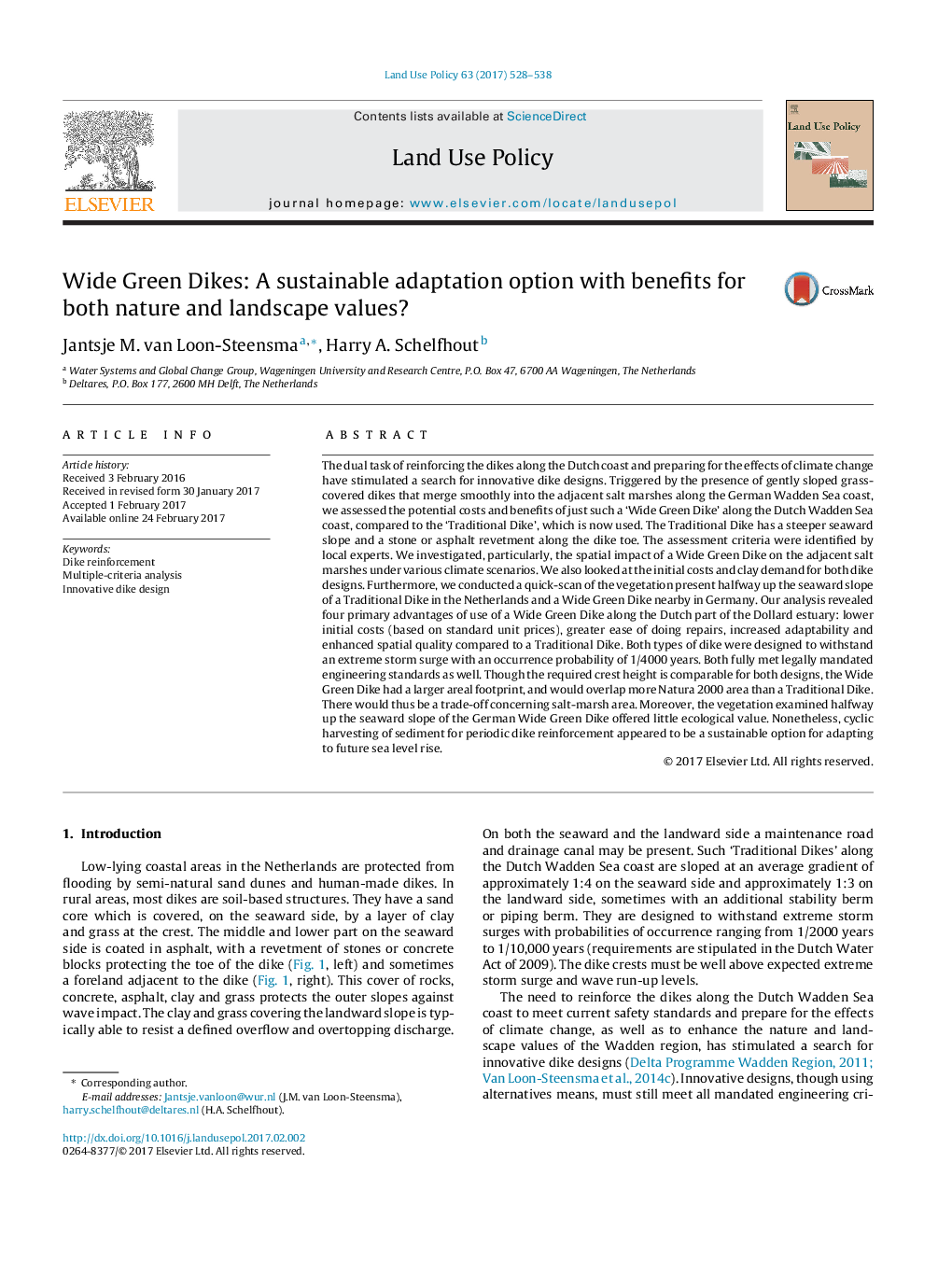| کد مقاله | کد نشریه | سال انتشار | مقاله انگلیسی | نسخه تمام متن |
|---|---|---|---|---|
| 6461077 | 1421820 | 2017 | 11 صفحه PDF | دانلود رایگان |

- A wide, gently sloping grass-covered dike is cheaper to build than a traditional steep dike with a revetment made of concrete or stones.
- Because of its adaptability, a Wide Green Dike forms a promising option for climate-change adaptation.
- Use of a Wide Green Dike that merges smoothly into the adjacent salt marshes instead of a Traditional Dike could improve the spatial quality of the Dutch Wadden Sea coast.
- Due to its larger areal footprint, a Wide Green Dike would come at the cost of salt-marsh habitat.
The dual task of reinforcing the dikes along the Dutch coast and preparing for the effects of climate change have stimulated a search for innovative dike designs. Triggered by the presence of gently sloped grass-covered dikes that merge smoothly into the adjacent salt marshes along the German Wadden Sea coast, we assessed the potential costs and benefits of just such a 'Wide Green Dike' along the Dutch Wadden Sea coast, compared to the 'Traditional Dike', which is now used. The Traditional Dike has a steeper seaward slope and a stone or asphalt revetment along the dike toe. The assessment criteria were identified by local experts. We investigated, particularly, the spatial impact of a Wide Green Dike on the adjacent salt marshes under various climate scenarios. We also looked at the initial costs and clay demand for both dike designs. Furthermore, we conducted a quick-scan of the vegetation present halfway up the seaward slope of a Traditional Dike in the Netherlands and a Wide Green Dike nearby in Germany. Our analysis revealed four primary advantages of use of a Wide Green Dike along the Dutch part of the Dollard estuary: lower initial costs (based on standard unit prices), greater ease of doing repairs, increased adaptability and enhanced spatial quality compared to a Traditional Dike. Both types of dike were designed to withstand an extreme storm surge with an occurrence probability of 1/4000 years. Both fully met legally mandated engineering standards as well. Though the required crest height is comparable for both designs, the Wide Green Dike had a larger areal footprint, and would overlap more Natura 2000 area than a Traditional Dike. There would thus be a trade-off concerning salt-marsh area. Moreover, the vegetation examined halfway up the seaward slope of the German Wide Green Dike offered little ecological value. Nonetheless, cyclic harvesting of sediment for periodic dike reinforcement appeared to be a sustainable option for adapting to future sea level rise.
74
Journal: Land Use Policy - Volume 63, April 2017, Pages 528-538